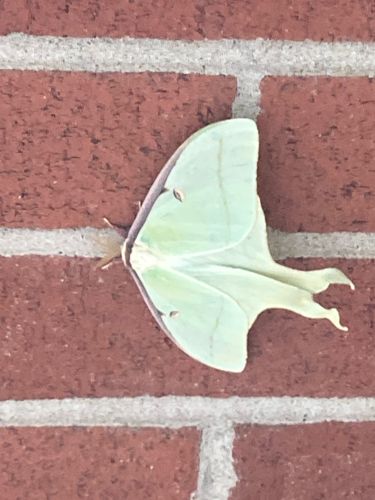Luna Moth
Scientific Name: Actias luna
Order & Family: Order: Lepidoptera, Family: Saturniidae (giant silk moths and royal moths)
Size: Wingspan typically ranges from 7.5 to 11.5 cm (3 to 4.5 inches), making it one of the largest moths in North America.

Natural Habitat
Found in deciduous forests across North America, from eastern Canada and the Great Plains of the United States, south through Florida and into northern Mexico.
Diet & Feeding
Adult Luna Moths do not feed. Larvae (caterpillars) are polyphagous, feeding on the leaves of various deciduous trees including Sweetgum, Walnut, Hickory, Pecan, Persimmon, Sumac, and White Birch.
Behavior Patterns
Adult Luna Moths are nocturnal and are active flyers at night. They are attracted to light. Their primary adult purpose is reproduction. They emerge from cocoons, mate, lay eggs, and die within about a week, as they do not feed as adults. Larvae (caterpillars) feed on host plant leaves.
Risks & Benefits
Luna Moths pose no risks to humans; they do not bite, sting, or carry diseases. As larvae, they are herbivores that help in forest nutrient cycling. As adults, they are important pollinators, though their short lifespan and lack of feeding limit their impact. They are a significant part of the food chain for birds, bats, and other insectivores.
Identified on: 8/21/2025